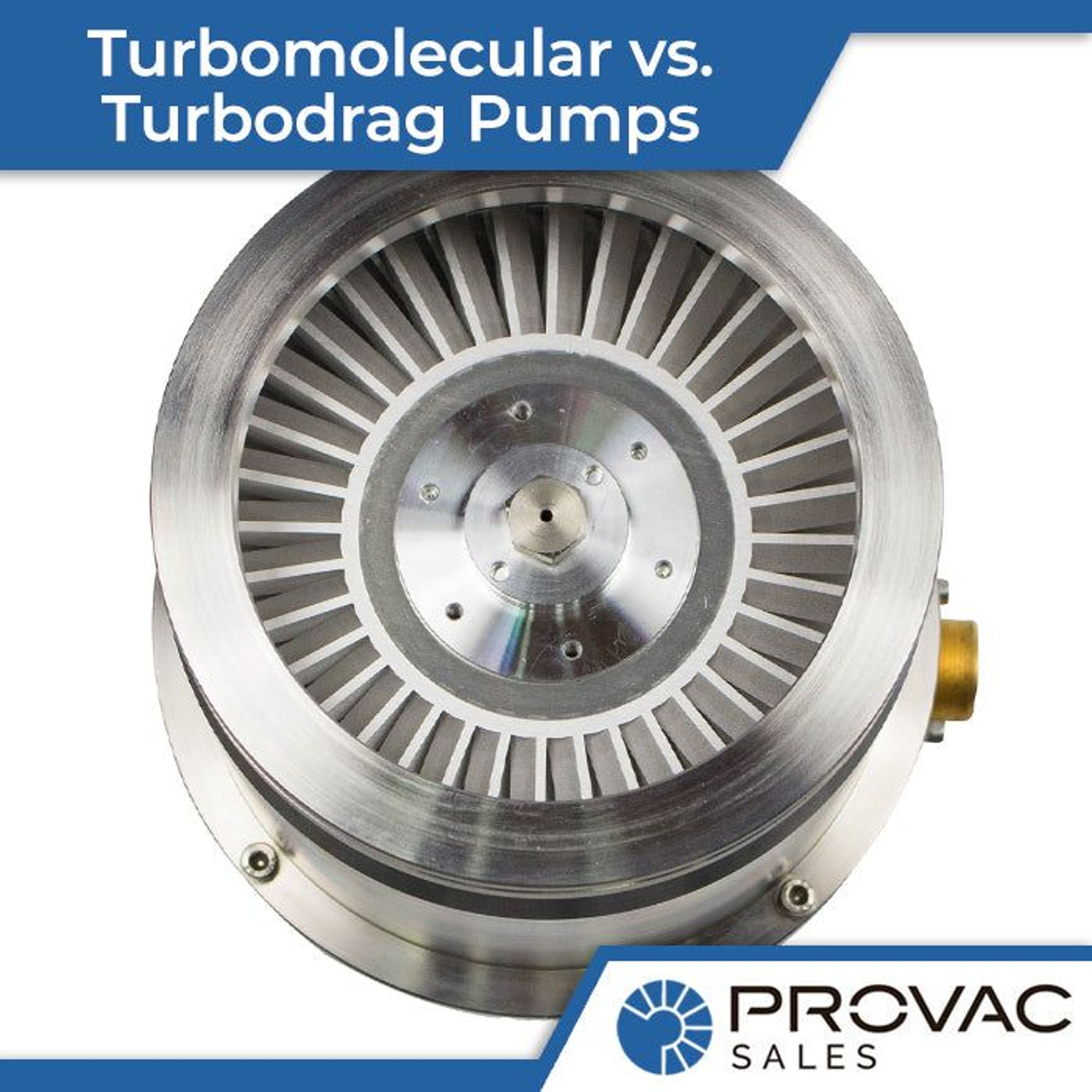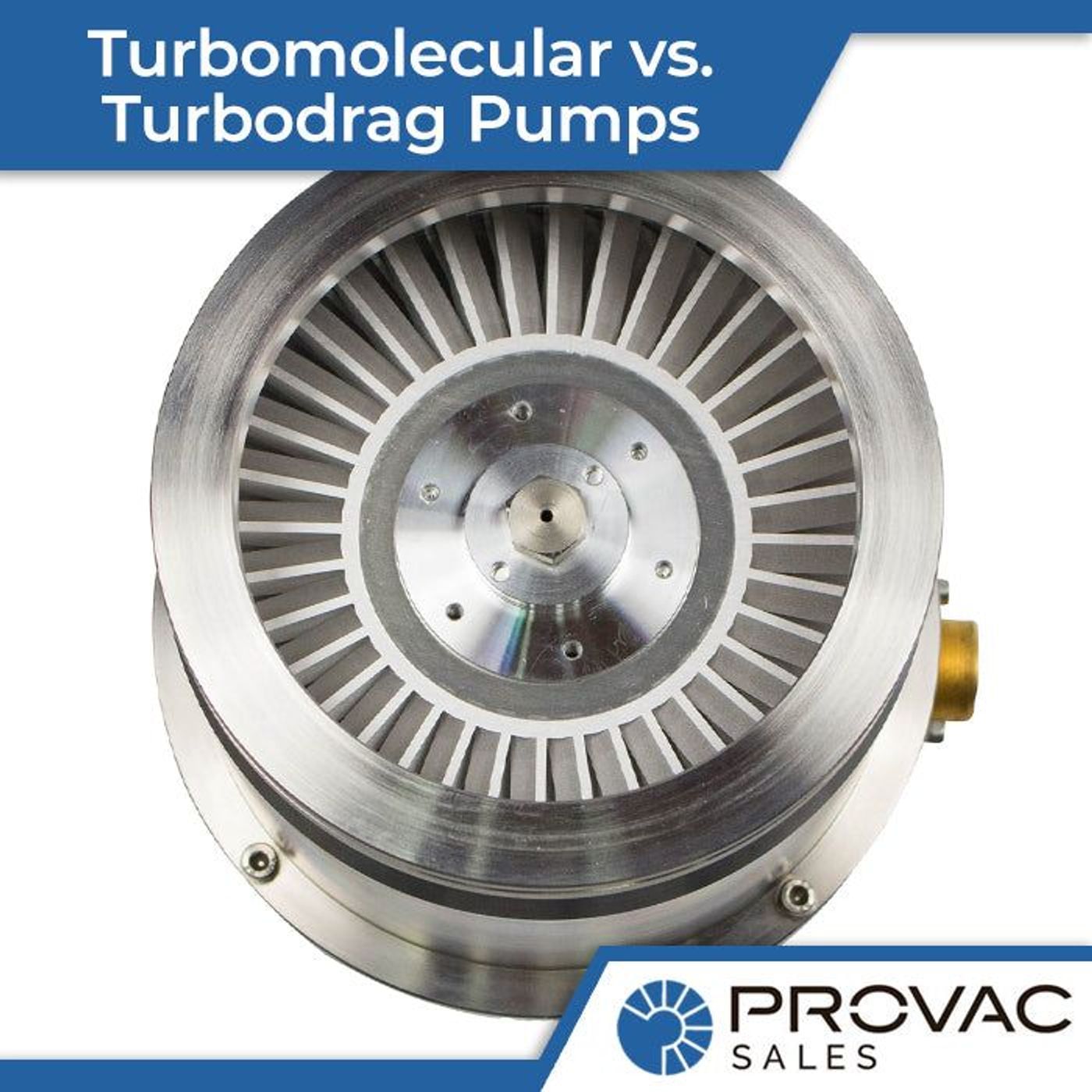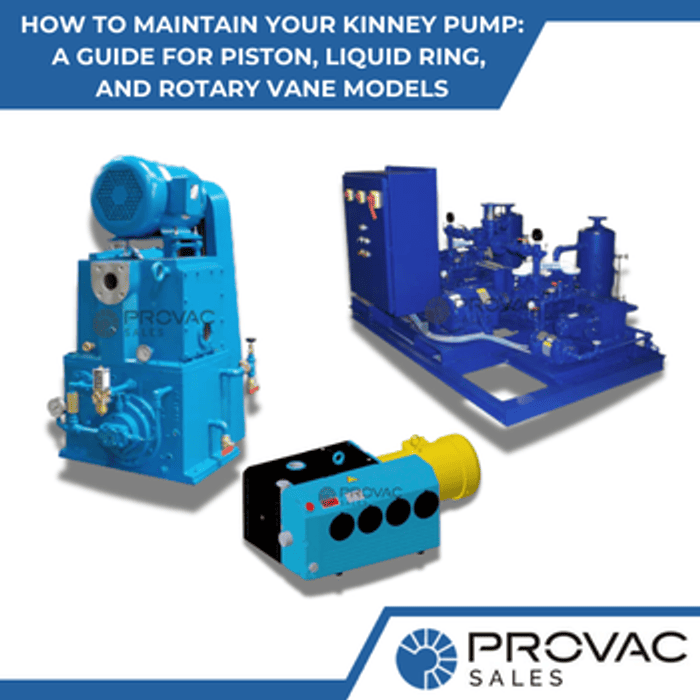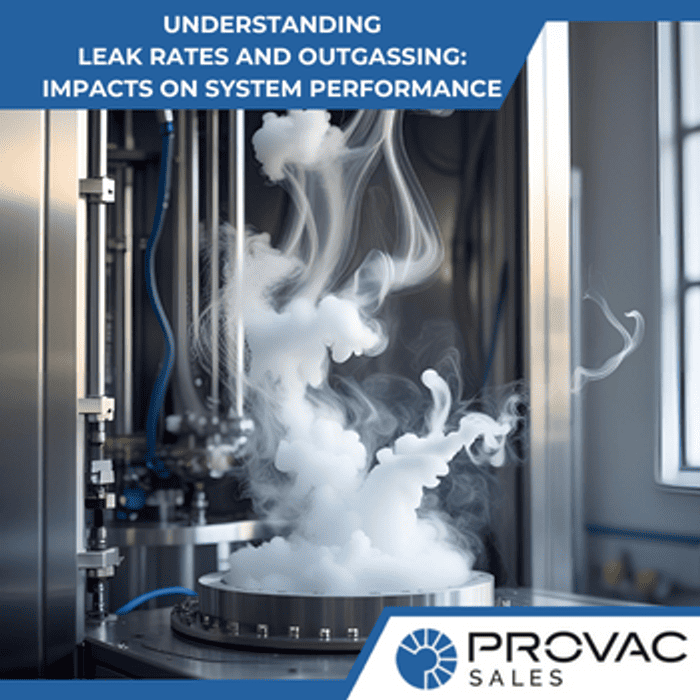A question we get a lot at Provac is what is the difference between a turbomolecular and molecular drag pump?
First, a little history. As vacuum pump technology has evolved, deeper vacuum levels have been able to be achieved. Rough vacuum pumps like oil sealed vane and oil sealed piston were coupled with secondary boosters to get into the 3-5 scale level. To achieve deeper vacuum users could add an oil sealed diffusion pump. While diffusion pumps are cost effective and efficient and achieving deeper vacuum, they come with fluid that needs to be changed out, and the possibility of back-streaming of fluid particles was a deterrent to many different applications.
At about the same time that the diffusion pump was invented, in the early 20th century, an alternative technology was developed.
Molecular drag pumps were created to enhance vacuum level for a standalone roughing pump. In a molecular drag pump, molecules are transferred by the movement of a rotating cylinder or disks that move the molecules from the inlet to the exhaust.
Molecular Drag Pumps Features:
-low pumping speed
- can be backed by smaller, less powerful roughing pumps
-achieves around 4-5 scale vacuum, more efficient for pumping heavier gasses
examples: Pfeiffer/Alcatel MDP series
Building on the concept of a molecular drag pump Turbomolecular pumps were created to create even deeper vacuum levels and faster pumping speeds. Turbomolecular pumps consist of several sets of rotating blades stacked with stationary blades in between which direct molecules from the inlet to the exhaust. By itself, turbomolecular pumps are extremely efficient at pumping many different gasses when backed by the appropriate roughing pump.
Turbomolecular Pumps Features:
-high pumping speed
-must be backed by robust roughing pump which can pull to 2 scale plus vacuum
-can achieve up to 11 scale vacuum
examples: Leybold TMP series | Pfeiffer TPH series
In the 90’s to the 2000’s and beyond most major vacuum pump manufacturers combined the two technologies of molecular drag and turbomolecular to achieve the best of both worlds. Molecular drag stages were added to turbomolecular pumps to provide enhanced compression ratios, thus reducing the need for larger backing pumps. This opened up the pumping range for Turbodrag pumps and allowed more versatile applications that required smaller footprint like mobile pumping stations and helium leak detectors. Turbodrag pumps allow for deeper, faster, pumping speeds while being backed by less expensive, smaller roughing pumps like dry diaphragm pumps.
Turbo Drag Pumps Features:
-most common design in modern turbo pumps
- combination of molecular drag stages & turbomolecular rotor
- allows for less powerful roughing pump, while creating high compression ratios and deep ultimate vacuum
-achieve around 8-9 scale vacuum
examples: Varian/Agilent TwisTorr series | Pfeiffer TMH & HiPace Series | Leybold MAG W series
Check out our entire collection of turbo pumps!
https://www.provac.com/collections/turbo-pumps
A question we get a lot at Provac is what is the difference between a turbomolecular and molecular drag pump?
First, a little history. As vacuum pump technology has evolved, deeper vacuum levels have been able to be achieved. Rough vacuum pumps like oil sealed vane and oil sealed piston were coupled with secondary boosters to get into the 3-5 scale level. To achieve deeper vacuum users could add an oil sealed diffusion pump. While diffusion pumps are cost effective and efficient and achieving deeper vacuum, they come with fluid that needs to be changed out, and the possibility of back-streaming of fluid particles was a deterrent to many different applications.
At about the same time that the diffusion pump was invented, in the early 20th century, an alternative technology was developed.
Molecular drag pumps were created to enhance vacuum level for a standalone roughing pump. In a molecular drag pump, molecules are transferred by the movement of a rotating cylinder or disks that move the molecules from the inlet to the exhaust.
Molecular Drag Pumps Features:
-low pumping speed
- can be backed by smaller, less powerful roughing pumps
-achieves around 4-5 scale vacuum, more efficient for pumping heavier gasses
examples: Pfeiffer/Alcatel MDP series
Building on the concept of a molecular drag pump Turbomolecular pumps were created to create even deeper vacuum levels and faster pumping speeds. Turbomolecular pumps consist of several sets of rotating blades stacked with stationary blades in between which direct molecules from the inlet to the exhaust. By itself, turbomolecular pumps are extremely efficient at pumping many different gasses when backed by the appropriate roughing pump.
Turbomolecular Pumps Features:
-high pumping speed
-must be backed by robust roughing pump which can pull to 2 scale plus vacuum
-can achieve up to 11 scale vacuum
examples: Leybold TMP series | Pfeiffer TPH series
In the 90’s to the 2000’s and beyond most major vacuum pump manufacturers combined the two technologies of molecular drag and turbomolecular to achieve the best of both worlds. Molecular drag stages were added to turbomolecular pumps to provide enhanced compression ratios, thus reducing the need for larger backing pumps. This opened up the pumping range for Turbodrag pumps and allowed more versatile applications that required smaller footprint like mobile pumping stations and helium leak detectors. Turbodrag pumps allow for deeper, faster, pumping speeds while being backed by less expensive, smaller roughing pumps like dry diaphragm pumps.
Turbo Drag Pumps Features:
-most common design in modern turbo pumps
- combination of molecular drag stages & turbomolecular rotor
- allows for less powerful roughing pump, while creating high compression ratios and deep ultimate vacuum
-achieve around 8-9 scale vacuum
examples: Varian/Agilent TwisTorr series | Pfeiffer TMH & HiPace Series | Leybold MAG W series
Check out our entire collection of turbo pumps!
https://www.provac.com/collections/turbo-pumps





